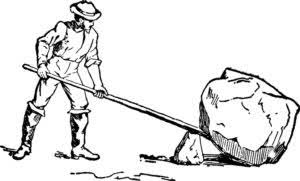8 5: Advantages and Disadvantages of Standard Costing Business LibreTexts

Cost accounting looks to assess the different costs of a business and how they impact operations, costs, efficiency, and profits. Individually assessing a company’s cost structure allows management to improve the way it runs its business and therefore improve the value of the firm. Since they are not GAAP-compliant, cost accounting cannot be used for a company’s audited financial statements released to the public. Marginal costing (sometimes called cost-volume-profit analysis) is the impact on the cost of a product by adding one additional unit into production. Marginal costing can help management identify the impact of varying levels of costs and volume on operating profit.
After establishing the standard quality of material, it is more important and necessary to establish the standard regarding quantity of each material. Generally, quantities are expressed in terms of kilograms, feet, units and so forth. Actual costs are ascertained from books of account, material invoices, wage sheet, charge slip etc. Inaccurate and unreliable standards cause misleading results and thus may not enjoy the confidence of the users of this system.
© Accounting Professor 2023. All rights reserved
There are almost always differences between the actual and standard costs, which are noted as variances, as a manufacturer must pay its suppliers and employees the actual costs. Standard costs are determined for different elements of costs, including the standard cost of direct materials, direct labor, and various overheads. After the March 1 transaction is posted, the Direct Materials Price Variance account shows a debit balance of $50 (the $100 credit on January 8 combined with the $150 debit on March 1). It means that the actual costs are higher than the standard costs and the company’s profit will be $50 less than planned unless some action is taken. Standard costing is the practice of substituting an expected cost for an actual cost in the accounting records.
- Explaining standard costing and variances to manufacturing operation staff can be difficult.
- Ensure everything stays accurate even though not all consumers purchase exactly alike amounts every time.
- Standard costing is used within cost accounting to calculate the expected costs of a product.
- When hiring cost accounting talent to set standard costs or production costs for an organization, it’s important to ensure that the candidate has a strong background in accounting principles.
- On the other hand, small towns offer a tight-knit community, lower living costs, and a better work-life balance.
- This can happen if the prices of raw materials or other inputs fluctuate more than expected or your production process is less efficient than you thought.
Under ABC, the trinkets are assigned more overhead related to labor and the widgets are assigned more overhead related to machine use. Quantity variances occur when the cost is a function of the number of units used during production, and therefore apply only to variable costs. Fixed costs by their nature are fixed do not vary with the quantity of units used in manufacture and therefore do not have a quantity variance. Furthermore, the management of the business, before setting up a standard cost system, should classify and codify all the relevant costs. This makes it easier for different costs to be traceable within the system. Furthermore, classifying costs can also help the management recognize high cost areas and reduce the costs within those areas.
STANDARD COSTS ARE OFTEN BASED ON HISTORICAL DATA
This account often contains the standard cost of the direct materials on hand. A manufacturer must disclose in its financial statements the actual cost of materials on hand as well as its actual cost of work-in-process and finished goods. Thus, variances are based on either changes in cost from the expected amount, or changes in the quantity from the expected amount. The most common variances that a cost accountant elects to report on are subdivided within the rate and volume variance categories for direct materials, direct labor, and overhead.

Save weeks/months of time required to input, adjust, and validate standard cost inputs into the system. Standard cost systems aid management accountants in tracking business performance against budget assumptions. Knowing what is expected and anticipated allows for better plans standard costing system and execution. When your performance does not match your expectations, a variance arises between the standard and the actual performance. It is a tool managers in different departments can use to help make decisions about pricing, product mix, and process improvement.
